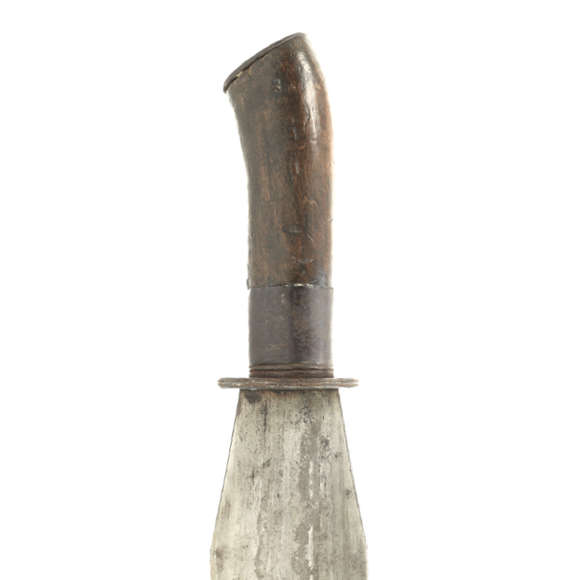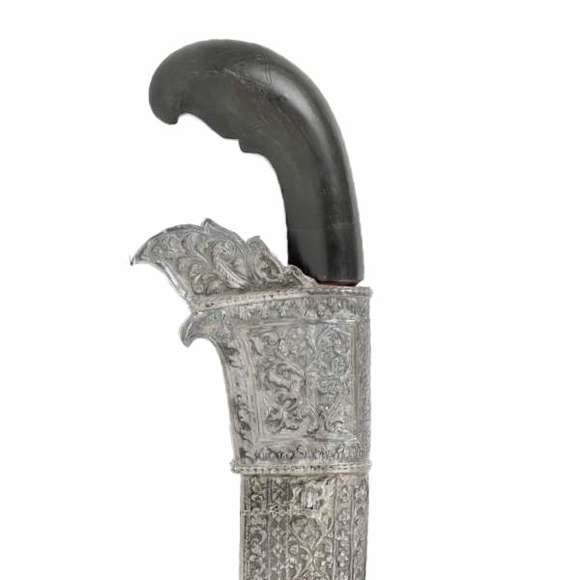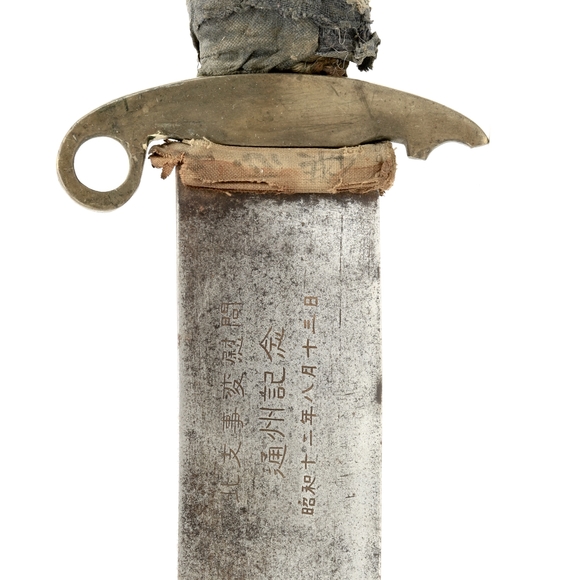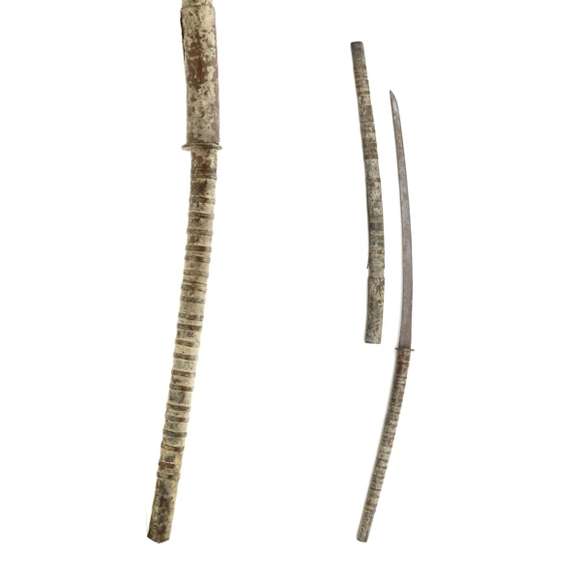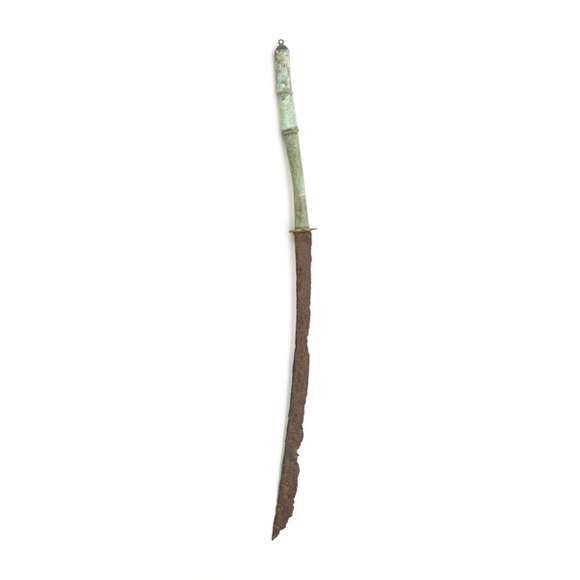Description A rather unusual Vi
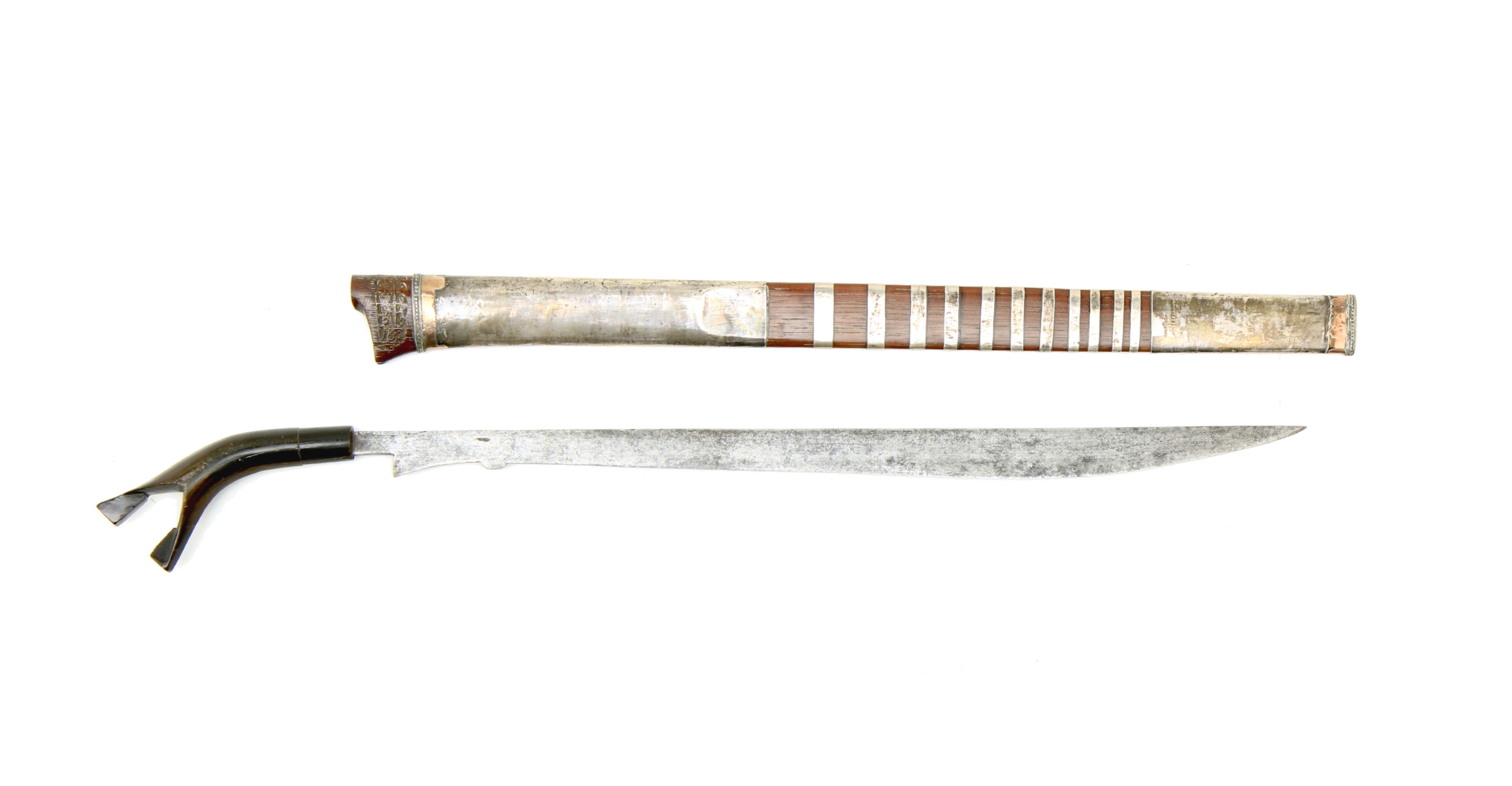
Sheathed 63.8 cm
Sword 61.3 cm
48.7 cm
Base 9 mm
Middle 4.5 mm
5 cm from tip 3 mm
Base 11.5 mm
Start edge 23.5
Middle 22 mm
5 cm from tip 16 mm
294 grams
15 cm from hilt
Iron, steel, water buffalo horn, wood, silver, suassa.
North Sumatra, Indonesia.
Introduction
The Batak kalasan is characterized by having a blade with a straight or slightly concave back and a slightly S-shaped edge, with a small protrusion on the edge side near the forte. They come with a variety of different hilts and scabbard configurations. Those clad in silver can also be called piso rempu pirak, literally "knife with silver strips". The variety with a peculiar hilt with two parallel protrusions, like a stylized open beak, which is called sukul nganga.1
Notes to introduction
1. See Albert van Zonneveld; Traditional weapons of the Indonesian archipelago. C. Zwartenkot Art Books, Leiden. Page 59. Also see H.W. Fischer; Catalogus van 's Rijks Ethnographisch Museum, Deel VIII. Bataklanden. Met aanhangsel Maleische Landen ter Sumatra's Noordoostkust. [Sumatra II]. Leiden, E.J. Brill, 1914. Page 101.
This example
An almost textbook example of a silver-plated kalasan with sukul nganga hilt. The base of the blade is narrow but thick, the edge on this portion is blunt except for the small protrusion which is sharp. Then one-third up the blade reaches full sharpness all the way to the tip. It is a fast and nimble blade that feels heavier than expected from the looks.
The hilt is made of two beautiful, tight-grained pieces of water buffalo horn. The portion that makes up the hilt is a little more amber colored, while the ferrule is made of a more black-colored piece. Lighter buffalo horn is a natural occurrence that was rarer, and therefore more prized.
The scabbard is made of two halves of hardwood, bound together by two large silver sleeves and 11 narrower silver bands. The scabbard mouth is attractively carved. Bands of braided silver wire and sheets made of suasa, a prized copper-gold alloy, further adorn the piece.
Condition
Good condition throughout, in its original finish. No recent repairs. Blade without damage or pitting. Scabbard wood in sound condition. Minor losses to the suassa band on top, and some wrinkling on the silver sleeve at the bottom.
Comparable examples
A very similar, but lesser example in terms of quality and condition is in the Dutch Tropenmuseum, accession number TM-903-11.
Conclusion
A nice example of a higher quality Karo Batak kalasan sword, in very good original condition.



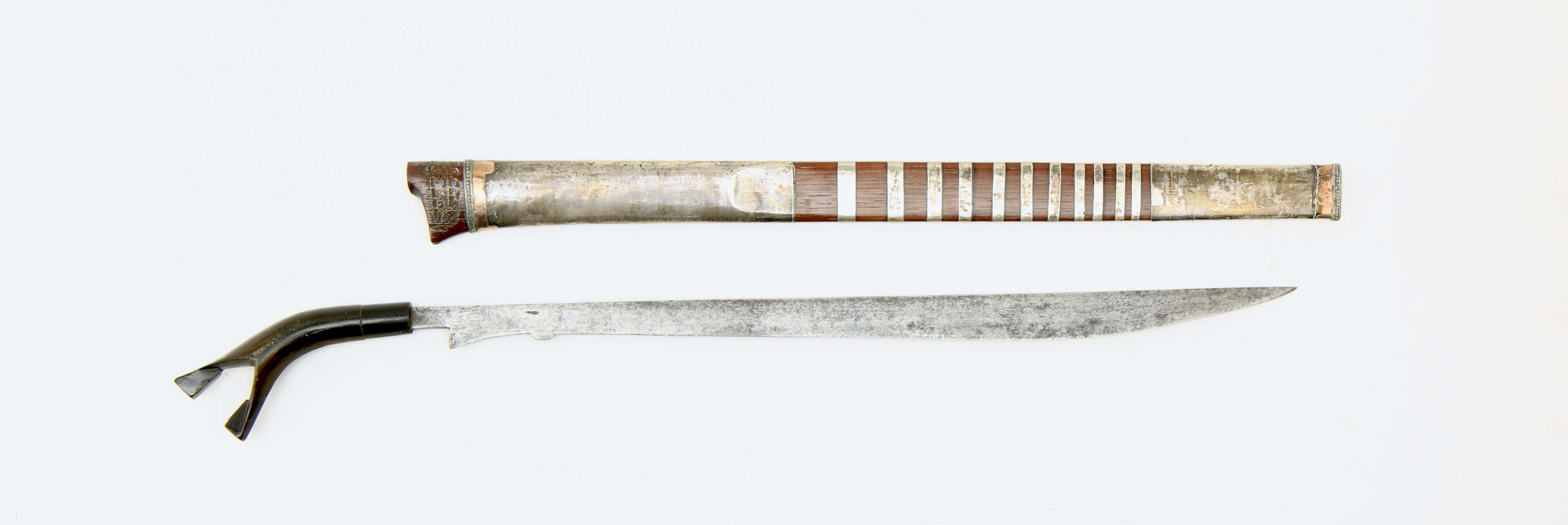
With markings attributing it to the Tongzhou incident and a Japanese surrender tag.
Collected by a Russian prince from the hill peoples of central Vietnam in 1892.
Found in excavated condition, published with results of c-14 and XRF analysis.

